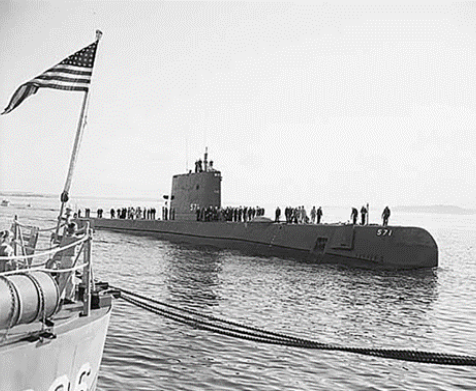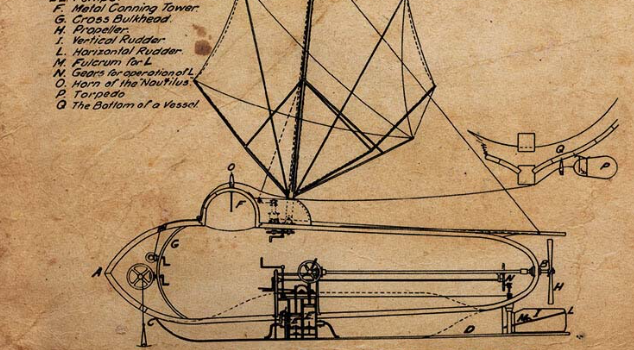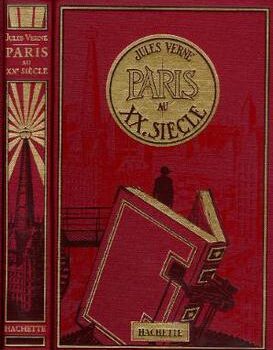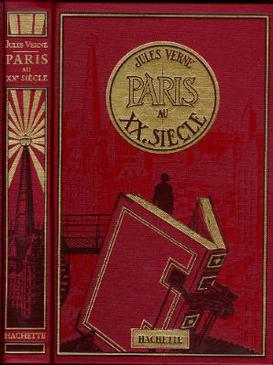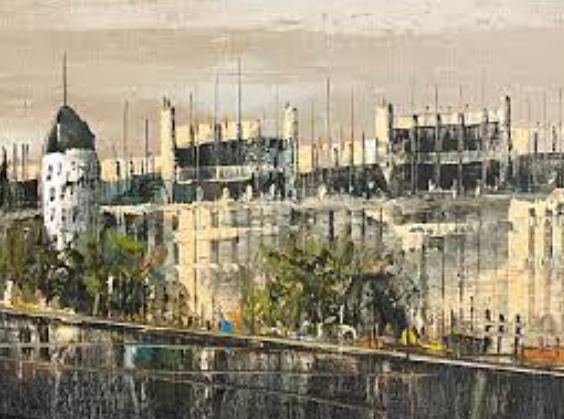“….. Master, how many adventurous dreams we dreamed on the plots of your books: the earth, the sea, the sky and the universe. With you, with you poet of wonders, we crossed into a dream beyond science….” (in Death of Jules Verne 1905)
In fact, the novels of this writer take us on adventures set in the air, space, underground and sea.
He skilfully combines a flowing narrative style, full of optimism, with plausibility, based on the scientific and technological advances of his time of which he is a great researcher and popularizer.
From this wonderful mix, he lets himself be influenced, giving life to his stories that established him as one of the fathers of modern science fiction.
He anticipated technological developments and applications but, as a careful researcher, he was also inspired.
It is in the cycle of novels defined as “scientific”, exactly in the second volume of the trilogy composed of “The Children of the Captain” and “The Mysterious Island”, that we find, described by Captain Nemo, the Nautilus, in “Twenty Thousand Leagues Under the Sea”. Verne was inspired by the work of the first operating submarine in the world, designed by American engineer Robert Fulton, built in 1800 for Napoleon, but the production was not funded either by the French or the British State, as it was considered “a terrible weapon, a morally unacceptable device”.
Here are some drawings by Robert Fulton:
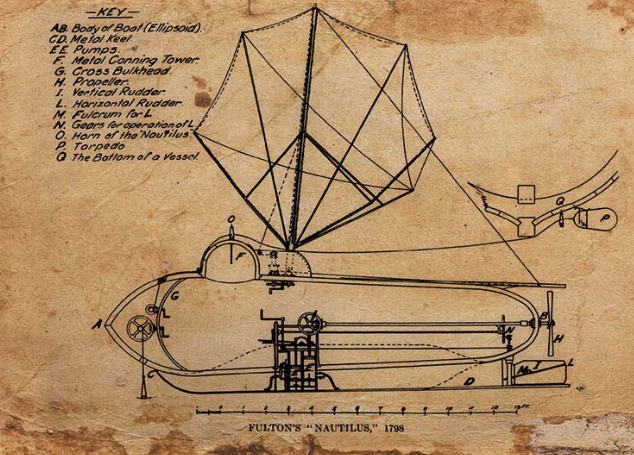
Implementation:
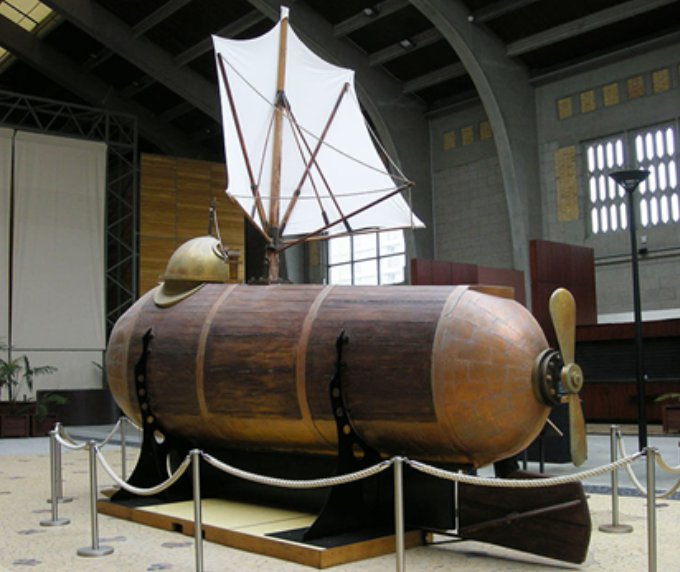
“Twenty thousand leagues under the sea” was first published in 1870. The motto of Verne’s Nautilus is “Mobilis in Mobili” or “Mobile in a mobile element”, and is described as follows:
“It’s a very elongated cylinder with conical tips. It closely resembles the shape of a cigar, a form already adopted in London for many marine constructions. The length of this cylinder, from end to end, is exactly seventy meters and its maximum width is eight meters. It is not, therefore, built with the same proportions as your vapors, but its lines are sufficiently elongated and its hull is very tapered, so that the displaced water easily slides and does not oppose any resistance to its march. The two measures I have given you will allow you to easily obtain, with a simple calculation, the surface and volume of the Nautilus.” Its area measures 1,011.45 square meters and contains 1,500.2 cubic meters. Once fully immersed, it displaces 1500.2 cubic meters of water, or 1500.2 metric tons. The vessel can travel up to 50 knots (92.60 km/h).
It normally submerges leaving its upper part uncovered by one-tenth, but if the tanks are filled with water, it can submerge entirely disappearing from view and blending with the sea. It is amphibious and driven by “clean” electric motors powered by sodium-mercury batteries, and can reach speeds up to 50 knots. It can also operate an effective defense against the huge creatures that inhabit the seas.”
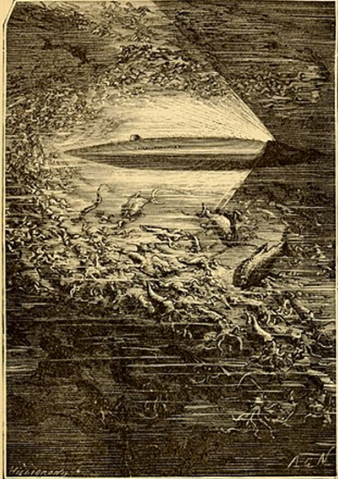
Drawing by Verne:
In an atmosphere of Cold War between the United States of America and the Soviet Union and frantic pursuit of the primacy for technological development between these two superpowers, in January 1954 the Americans launched the first nuclear-powered submarine in the history of all military navies: USS-Nautilus (SSN -571).
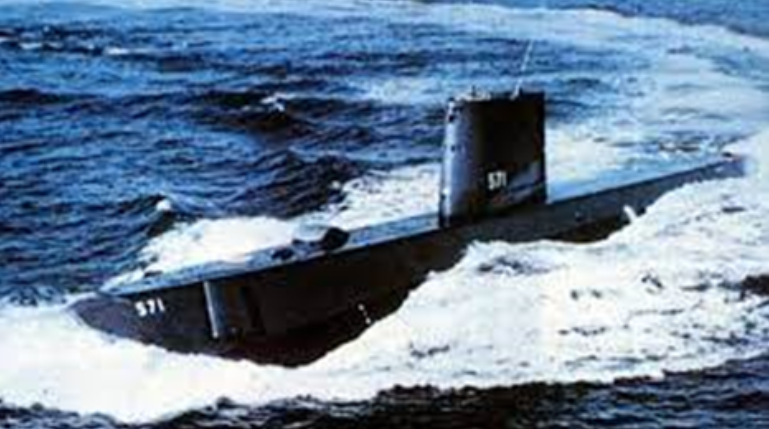
It was able to win a large number of records, first among them being the underwater navigation of the entire North Pole, which took place in 1958 from the Bering Strait to East Greenland.
These are the dimensions:
length 97.5 meters – width 8.5 meters; a displacement ranging between 2980 tons surfaced and 3520 submerged. Thanks to the nuclear reactor it was able to reach the speed of about 43 km/h, around 23 knots.
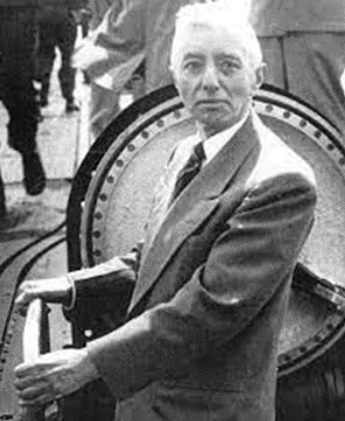
The project was planned and supervised by Admiral Rickover, known as the “Father of the Nuclear Navy”. After a glorious career, in March 1980, the Nautilus was decommissioned from active service. Today it is a museum ship in the port where it all began, in Groton at the Submarine Force Museum.
